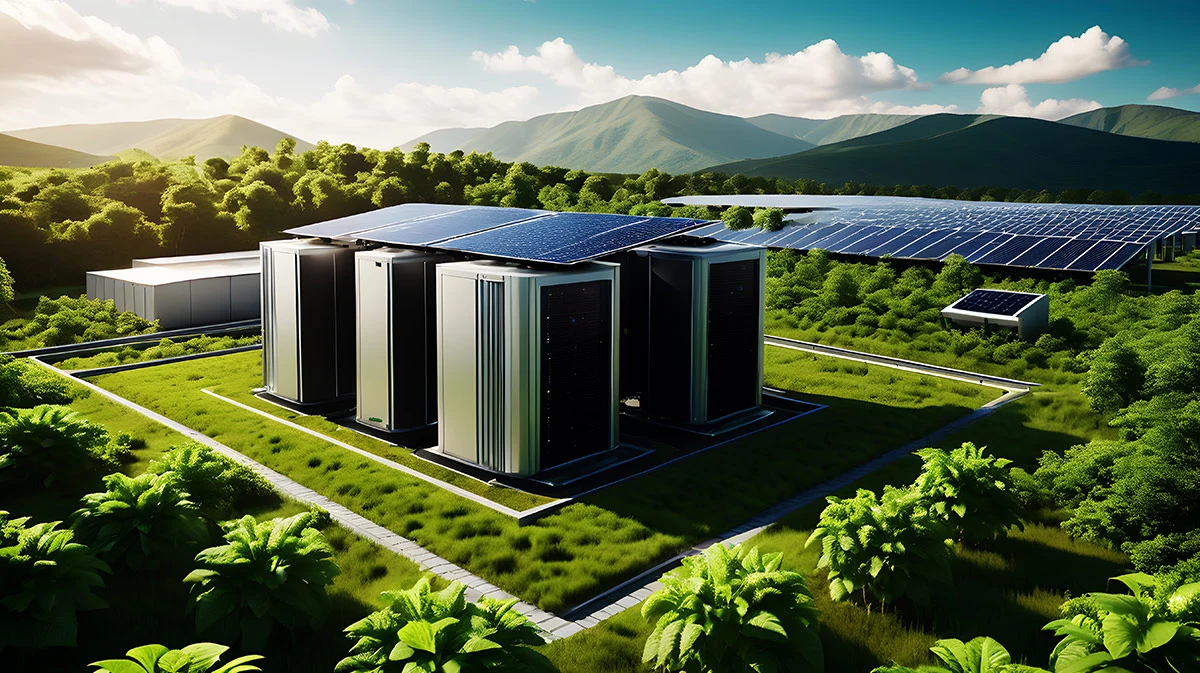
The digital revolution has transformed how we look at the world and interact with it. Digital technologies carry the potential to change the use of natural resources. This has enabled the human race to virtually connect and leverage nature’s resources more profoundly. But development is not the only thing we want, as we face environmental challenges along with it.
As we see, data centers carry the load of the data world, the inclusion of sustainable factors in them is the primary way towards greening the digital world. One should not forget that sustainable data center solutions are not only about lowering carbon footprint but also about creating more efficient and cost-effective operations.
In this blog, we will explore the importance of sustainable and energy-efficient data centers and their key features.
The Importance of Sustainability in Data Centers
In our increasingly digital world, data centers are crucial in supporting the vast amount of data generated daily. This needs a significant amount of energy consumption, primarily for powering servers and cooling systems used to maintain the climate in a data center facility. As the demand for data processing and storage grows, so does the energy consumption of data centers. As we already know, the high energy demand leads to significant greenhouse gas emissions, contributing to climate change.
Therefore, sustainability in data centers is essential to reduce environmental impact. Lowering energy consumption is not a workable option. However, we can lower the consumption with the help of energy-efficient designs, and using renewable energy sources can significantly reduce the carbon footprint of data centers. Embracing these solutions not only benefits the environment but also offers long-term economic advantages.
Key Features of Sustainable Data Centers
These features are not only to contribute to environmental preservation but to reduce operational costs also. They comprise various advanced sustainable practices related to infrastructure, resources, systems, and functionality of data centers. Let’s follow the list of these key features:
- Energy-Efficient Infrastructure
- Renewable Energy Sources
- Advanced Cooling Techniques
- Modular Data Centers
- Heat Recovery Systems
Energy-Efficient Infrastructure:
Designing and building green infrastructure for data centers is important. The utilization of energy-efficient architectural designs, such as optimized cooling systems and natural lighting will lead to a reduction in energy consumption. Deployment of energy-efficient servers and storage systems that require less power to operate will be an added advantage for energy efficiency.
Renewable Energy Sources:
To power data centers, there is a need to have significant investments in renewable energy sources such as solar energy and hydroelectric energy. This will eventually reduce reliance on fossil fuel consumption. With feasible geographical and other factors, utilizing hydroelectric power provides a stable and sustainable energy source.
Advanced Cooling Techniques:
Air conditioning in data centers is continuous and hence intensive energy consumption. To reduce this consumption, leveraging natural air or water sources to cool data centers is a practical and indeed a green solution. The tech solution of liquid cooling has proven to be more efficient than traditional air cooling methods.
Modular Data Centers:
Data centers have complex structures of infrastructure from cables to racks to in-house servers. Hence the scalability options for storage according to the needs of the client are required. Using modular data centers that can be easily scaled up or down based on demand will also improve efficiency and reduce unnecessary energy use.
Heat Recovery Systems:
The continuous working of IT equipment such as servers, computing machines, and their related hardware equipment, leads to overheating. Capturing the excess heat and reusing waste heat generated by these equipment to heat office spaces or other facilities is possible. This facility will also lower stress on the cooling system and energy consumption by data centers.
NES Data Centers As Sustainable Data Center Solutions
In the above blog, we have understood how sustainable and energy-efficient data center solutions are essential for mitigating the environmental impact of growing digital infrastructure. By adopting green practices and innovative technologies, data centers can contribute to a more sustainable future while maintaining operational efficiency.
NES (Natural Environmental Solutions) Data Centers demonstrate that it is possible to balance environmental responsibility with operational excellence. By prioritizing sustainability, NES not only helps protect the environment but also achieves significant cost savings and operational efficiencies.
This dual focus on sustainability and efficiency positions NES Data Centers as a leader in the industry, paving the way for a greener future.
Learn more about sustainable solutions provided by NES Data Centers on the website.
